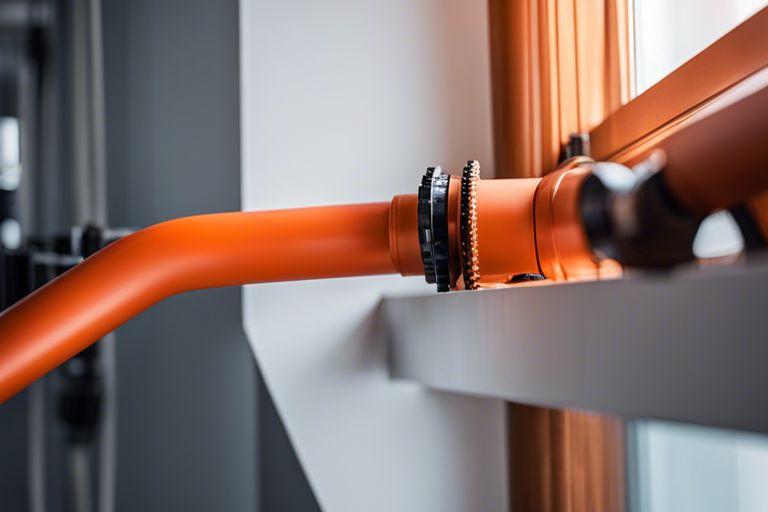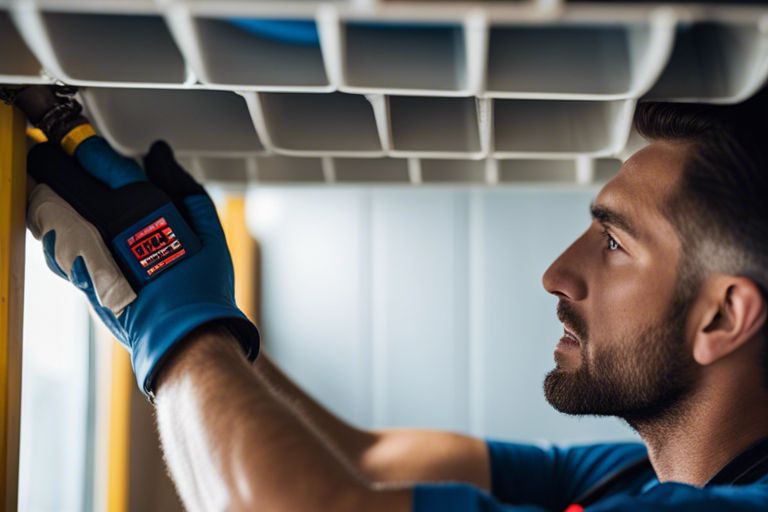Your How-to Guide To Upgrading To PEX Piping – Benefits For Orange County Homes

You deserve a plumbing system that is both reliable and efficient, which is why upgrading to PEX piping can be a game changer for your Orange County home. In this guide, you’ll discover the numerous benefits of PEX, such as improved resistance to corrosion, flexibility for easier installation, and enhanced temperature control. Whether you’re renovating or simply looking to improve your home’s plumbing, you’ll find practical steps and valuable insights to help you make the transition smoothly. Let’s investigate how this innovative piping can transform your living space. Key Takeaways: Improved Durability: PEX piping is highly resistant to corrosion and scale buildup, ensuring a longer lifespan compared to traditional pipes. Flexibility and Ease of Installation: PEX’s flexible nature allows for easier installation in tight spaces, reducing the need for joint fittings and minimizing leaks. Cost-Effectiveness: Upgrading to PEX can lower long-term costs through energy savings and reduced maintenance, making it a smart choice for Orange County homeowners. Understanding PEX Piping Before you consider upgrading your plumbing system, it’s crucial to understand what PEX piping is and what advantages it offers. This will help you make an informed decision for your Orange County home. What is PEX Piping? The term “PEX” stands for cross-linked polyethylene. It is a flexible plastic piping system used in various plumbing applications, including hot and cold water delivery and heating systems. PEX has gained immense popularity due to its unique properties, such as resistance to corrosion and scale, which make it a long-lasting alternative to traditional copper or PVC pipes. It is important to note that PEX piping is available in various colors—mostly red for hot water systems and blue for cold water systems. This color-coding makes it easier for you to identify which piping is used for which water supply in your home. Additionally, PEX can be snaked into walls and ceilings with ease, reducing the need for fittings and minimizing installation time. Types of PEX Piping There’s not just one type of PEX piping; they come in several variations, each suited for different applications. Primarily, you’ll encounter three types of PEX tubing: PEX-A, PEX-B, and PEX-C. Each type has its manufacturing process and therefore its unique properties and advantages. Type Characteristics PEX-A Most flexible; resistant to kinks; ideal for cold weather. PEX-B More affordable; less flexible; less prone to expansion. PEX-C Moderate flexibility; suitable for standard applications. Reinforced PEX Enhanced durability; applicable in high-pressure systems. Colored PEX Color-coded for hot and cold systems; simplifies identification. In addition to the types mentioned above, PEX tubing can be categorized based on its pressure rating and applicability in residential or commercial settings. This variety allows you to choose the perfect system that fits your specific needs. PEX-A is the top choice for flexibility. PEX-B offers the best value for the investment. PEX-C is a great all-rounder for basic installation. Reinforced PEX is built for durability under high pressure. Colored PEX helps streamline your installation process. Perceiving the distinctions among these types can save you both time and money during the installation and maintenance phases of your plumbing project. Key Features of PEX Piping There’s a reason PEX piping has become a popular choice among homeowners. One of the key features is its resistance to scale and chlorine, which extends the lifespan of your plumbing system. Moreover, PEX is non-corrosive, meaning you won’t have to worry about rust damaging your piping over time. Flexible installation options allow for easier routing. Resistant to freezing; expands rather than rupturing. Less noisy compared to metal pipes. Cost-effective compared to traditional piping materials. Low thermal conductivity, keeping water warm longer. This blend of features makes PEX piping an attractive option for many homes, especially in areas with fluctuating weather conditions like Orange County. There’s more to explore regarding the benefits of PEX piping. For instance, the installation process is generally quicker, which translates to lower labor costs for you. This means you can focus on other home improvement projects without worrying about prolonged plumbing work. Eliminates the need for joints and fittings. Easy to cut and modify as needed during installation. Days can be saved thanks to faster installation times. Easily accessible in various lengths and fittings. Adaptable to a wide range of plumbing scenarios. This flexibility in application further cements PEX piping as an optimal choice for modern plumbing solutions. Benefits of Upgrading to PEX Piping You may be contemplating a plumbing upgrade for your Orange County home, and considering PEX piping is a smart move. One of the primary advantages of PEX is its durability and longevity, which ensure your plumbing systems remain efficient and hassle-free. Making an investment in quality piping means fewer repairs and replacements over time, allowing you to focus on other important areas of home maintenance and improvement. Durability and Longevity Little do many homeowners know, PEX piping offers remarkable resistance to wear and tear compared to traditional materials like copper and PVC. Its construction allows it to withstand extreme temperature fluctuations without cracking or degrading, making it ideal for varying climates. This resilience also translates to a significantly extended lifespan, often lasting up to 50 years or more with proper care, leading to peace of mind for homeowners. Resistance to Corrosion Resistance to corrosion is a significant advantage when considering the materials you use in your home’s plumbing system. PEX pipes are non-metallic and do not corrode over time, eliminating the risks associated with rust and degradation that often plague traditional metal options. This means cleaner water and fewer contaminants making their way through your plumbing as the years go by. Corrosion-resistant materials not only enhance the quality of your water supply but also contribute to the system’s overall durability. By choosing PEX, you effectively sidestep many plumbing issues that arise from corroded pipes and fittings, allowing you to enjoy a longer-lasting and stress-free plumbing experience. Flexibility in Installation With PEX piping, you benefit from the incredible flexibility it offers during installation. Unlike rigid pipes, PEX can be bent around corners, reducing the need
How-to Save Money With Expert PEX Pipe Installation In Orange County

Most homeowners in Orange County are unaware that choosing PEX piping can significantly reduce both installation costs and long-term maintenance expenses. By opting for expert PEX pipe installation, you can enhance your plumbing system’s efficiency while minimizing your overall spending. In this guide, we will walk you through the benefits of PEX, how to select a qualified installer, and tips to ensure you get the most value for your investment, allowing you to make informed decisions for your home plumbing needs. Key Takeaways: Efficiency: Expert PEX pipe installation can significantly reduce labor costs and time, leading to overall cost savings on plumbing projects. Durability: PEX pipes have a longer lifespan compared to traditional piping, which minimizes the need for frequent replacements and associated costs. Energy Savings: PEX’s insulating properties help in maintaining water temperature, resulting in decreased energy bills for heating water. Understanding PEX Pipe Installation Your journey to efficient plumbing begins with understanding what PEX pipe is and how it can benefit your home. PEX, or cross-linked polyethylene, is a flexible plastic tubing often used for water supply lines in residential and commercial properties. This innovative material has gained widespread popularity due to its durability, resistance to corrosion, and ease of installation. Unlike traditional pipe materials such as copper and PVC, PEX can navigate tight spaces and accommodate a variety of installation configurations, making it an ideal choice for both new constructions and retrofitting projects. What is PEX Pipe? Any homeowner exploring plumbing options will come across PEX piping, a significant advancement over traditional materials. PEX is a type of plastic pipe that is designed to withstand the effects of water temperature fluctuations and has excellent resistance to scale and chlorine. Moreover, PEX won’t corrode, scale, or rust, meaning that it can offer a longer lifespan compared to other piping materials. It’s also remarkably lightweight, which makes transport and installation easier for contractors and DIY enthusiasts alike. Advantages of PEX Over Traditional Plumbing Understanding why PEX is a preferred material often begins with its key advantages. First, PEX is less expensive than traditional options such as copper, both in terms of material costs and labor, as it’s easier to handle and install. Additionally, PEX piping can be snaked into walls and other tight spaces without the need for joints, minimizing potential leaks. Since it’s flexible and doesn’t rust or corrode, you can trust PEX to deliver a reliable plumbing system that lasts. Understanding the advantages of PEX over traditional plumbing options can drastically affect your renovation costs and ongoing maintenance. Because PEX is resistant to freezing, it can help prevent the costly damage of burst pipes during winter months. Furthermore, its faster installation methods can reduce labor costs on your projects, and with fewer fittings needed compared to traditional copper piping, you may find long-term savings in both water and energy bills as well. PEX Installation Process Overview Installation of PEX piping is relatively straightforward, especially when compared to traditional materials. Typically, the first step involves planning your piping layout, ensuring that you account for necessary fittings and connections before beginning. Once your plan is in place, you can start by cutting the PEX tubes to size and then using specialized connectors to fit them together. The process usually requires far less time than conventional methods, thereby allowing you to save on labor costs and get your plumbing system up and running more quickly. A detailed overview of the installation process highlights how PEX’s simplicity can be beneficial for your plumbing needs. Many homeowners choose to have professionals handle the installation to ensure everything is done properly, but the ease of the process means that even skilled DIYers can take on the challenge without much hassle. Overall, using PEX reduces the complexity and time associated with plumbing projects, making it a wise choice when considering cost savings and efficiency. How to Choose the Right PEX Materials If you are considering a PEX pipe installation in your home, it’s important to choose the right materials to maximize your investment. Understanding the various types of PEX available can save you both money and headaches down the road. To get insight into financial considerations, you might want to check out How Much Does It Cost To Repipe A Home in Orange County. In this section, we’ll cover the types of PEX pipe, their uses, and what factors to keep in mind when selecting them. Types of PEX Pipe and Their Uses There’s a variety of PEX pipe available on the market, each designed for specific applications. The primary types are PEX-A, PEX-B, and PEX-C, and understanding their differences can help you make an informed decision based on the demands of your plumbing project. Type of PEX Key Features PEX-A Highly flexible, resistant to freezing, and allows for greater expansion. PEX-B More affordable, offers moderate flexibility, and is resistant to scale. PEX-C Least expensive, best for general plumbing uses, but less flexible. Reinforced PEX Iron or aluminum filled for high-pressure applications. Color-Coded PEX Available in red and blue for hot and cold water supply lines. Assess your project’s requirements Consider local climate and conditions Evaluate your budget Consult with a professional Make an informed decision After reviewing the types of PEX available, think about which one aligns best with your specific plumbing needs. Your choice can significantly influence the cost and efficiency of your installation. Selecting the Right Size for Your Project Little details can have a big impact, and selecting the right size of PEX piping is crucial for any plumbing project. The diameter of your pipes affects not only water flow but also pressure and overall efficiency. Standard sizes include 3/8″, 1/2″, 3/4″, and 1″, and choosing the right size depends on the intended application and your plumbing system. Pipe sizing shouldn’t be a one-size-fits-all approach. Rather, it requires careful consideration of factors like the distance the water travels, the flow rate you desire, and any specific appliances or faucets that need connecting. For instance, if you’re running a long
